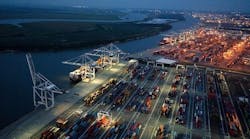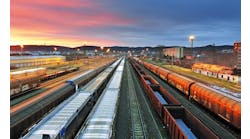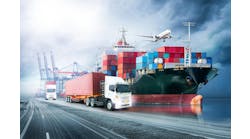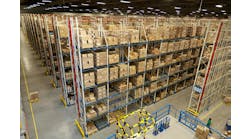Daring to predict how the logistics industry will look in the next five to ten years, PwC recently released a report “Shifting Patters: The Future of the Logistics Industry.”
The consulting group identified four key areas of disruption that will have the largest effect on how the sector will look; new customer expectations, new technology, and new business models and new market entrants.
Here’s PwC take on these disrupters.
Consumer Expectations
Both individuals and businesses expect to get goods faster, more flexibly, and – in the case of consumers – at low or no delivery cost. Manufacturing is becoming more and more customized, which is good for customers but hard work for the logistics industry. Add it all up and the sector is under acute and growing pressure to deliver a better service at an ever lower cost.
New Technology
The intelligent use of technology, from data analytics, to automation, to the ‘Physical Internet’ is how these new expectations will be met. This promises lower costs, improved efficiency, and the opportunity to make genuine breakthroughs in the way the industry works. But ‘digital fitness’ is a challenge for the sector, which is currently lagging many of its customers in this respect.
New Business Models
The dominant theme in this scenario is the growth of collaborative working, which allows the current market leaders to retain their dominance. This could for example see a greater use of ‘Physical Internet’ solutions, based on a move towards more standardized shipment sizes, labeling and systems.
The sector will see Uber-style approaches to last-mile delivery, to more formal JVs and partnerships at corporate level, the whole sector is redefining collaboration. But much of this is hampered by inconsistencies in everything like shipment sizes, processes or IT systems.
New Entrants
Some of the sector’s own customers are starting up logistics operations of their own, and new entrants to the industry are finding ways to carve out the more lucrative elements of the value chain by exploiting digital technology. New entrants in the form of startups make a bigger impact. The most challenging and costly last mile of delivery, in particular, becomes more fragmented, exploiting new technologies like platform and crowd-sharing solutions. These start-ups collaborate with incumbents and complement their service offers.
As a result of these four disrupters, PwC predicts what they call complex competition. The competitive set evolves in a different direction, as large industrial or retail customers and suppliers become players in the logistics market themselves, not just managing their own logistics but turning that expertise into a profitable business model. Scale matters: and finally, in this scenario, the current market leaders compete for a dominant market position by acquiring smaller players, achieving scale through consolidation, and innovation through the acquisition of smaller entrepreneurial start-ups.



